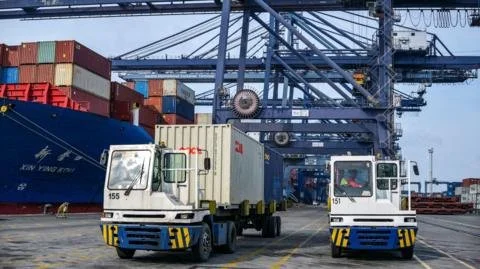Unlocking New Trade Horizons: The US-Indonesia Tariff Deal Explained!
In a significant trade agreement, US President Donald Trump and Indonesian President Prabowo Subianto have reached a momentous tariff deal that aims to enhance economic relations between the two nations. The tariffs on Indonesian goods will be slashed from 32% to 19%, facilitating greater access for American firms to the Indonesian market. Trump articulated that this deal represents a ’full access’ arrangement, emphasizing the mutual benefits derived from it.
Prabowo described the achievement as the dawn of a ”new era of mutual benefit”, acknowledging Trump’s reputation as a tough negotiator. This agreement follows an earlier caution from Trump, hinting at renewed tariff threats against numerous trade partners, which prompted swift negotiations.
In exchange for the tariff reduction, Indonesia is expected to make substantial purchases, including $15 billion worth of US energy, $4.5 billion in agricultural products, and 50 Boeing jets. Although less than previously anticipated amounts, Prabowo highlighted that both countries have found a productive partnership, addressing Indonesia’s need for imports such as fuel, wheat, and soybeans.
While Prabowo did not specify the unconditional 0% tariffs for US goods entering Indonesia, he remained optimistic about the agreement’s prospects. Economists pointed out that the deal’s advantages for Indonesia are likely more political than economic since the US is not among Indonesia’s most substantial trading partners.
As part of a broader strategy, the Trump administration has also pursued negotiations with other countries, such as the UK, China, and Vietnam, indicating a pattern of high tariffs with unresolved terms. Looking ahead, economic advisors anticipate further trade deals as countries adjust their expectations within the evolving landscape of international trade.

